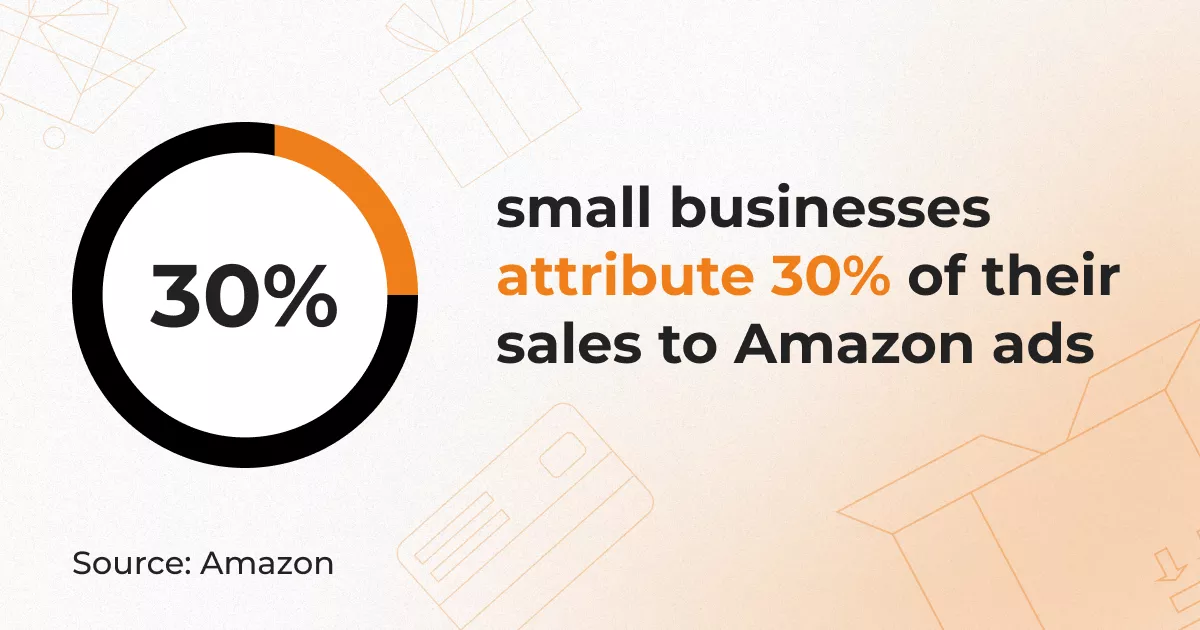Table of Contents
-
Ad Spend for Beauty & Wellness Brands
-
Real Costs: Key Factors
-
General Cost Ranges
-
Tips for Managing Costs
-
Advertising Budget Guidelines for Beauty & Wellness Sellers
-
Pro Tips From Industry Experts
-
Playing the Long Game
-
FAQ
Ad Spend for Beauty & Wellness Brands
Welcome to the Wild West of beauty e-commerce, where your Amazon advertising budget can either be your best friend or your financial nemesis.
If you’re selling skincare serums, hair masks or premium cosmetics on Amazon, you’ve probably noticed something alarming: Your CPC for Amazon ads seems to climb faster than a frightened cat up a tree. You're not imagining it. Beauty and wellness is officially one of the most expensive niches to advertise in, with average cost-per-click rates that would give even seasoned marketers a migraine.
The beauty industry on Amazon isn’t just competitive — it’s brutal. You’re going head-to-head with beauty giants like L’Oréal who have advertising budgets that dwarf most countries’ GDP. Yet thousands of smaller brands are thriving by understanding the real costs, optimizing their advertising budget strategically and playing the long-tail keyword game like chess masters.
Real Costs: Key Factors
Competition Levels That Would Make Polar Bears Sweat
When everyone’s launching their “revolutionary” anti-aging serum simultaneously, your cost-per-click doesn’t just rise — it skyrockets.
Here’s what drives these astronomical costs:
-
Seasonal spikes: Black Friday and holiday seasons can triple your CPCs
-
Influencer-driven trends: When a TikTok beauty guru mentions “glass skin,” related keyword costs explode
-
New product launches: Major brands dropping new collections create bidding wars
Ad Type Impact on Your Bottom Line
Not all Amazon ad formats are created equal in the beauty space:
Sponsored Products Ads: Your gateway drug to Amazon advertising. Average CPC in 2025 is between $0.81–$1.30, but in beauty, expect the higher end.
Sponsored Brands Ads: The showstoppers of Amazon advertising. Average CPC in 2025: $1.10–$2.50, with beauty pushing toward that upper limit. In the beauty category, the CPC for Sponsored Brands can reach $2.30.
Sponsored Display Ads: The stalkers of the advertising world (in a good way). The average CPC of Sponsored Display Ads in 2025 is between $0.80–$1.60. Perfect for retargeting that customer who abandoned their cart full of face masks.
Product Category Specifics
Not all beauty products face the same advertising apocalypse:
Skincare: The toughest category. Anti-aging and acne treatments need premium CPCs because profit margins justify higher ad spend.
Hair Care: Moderately expensive, especially for specialized treatments like hair loss products.
Cosmetics: Wildly variable. Foundation and concealer keywords are particularly expensive due to high search volumes.
The Premium Product Advantage
Premium products often perform better in Amazon advertising because the margins support higher advertising costs. A $200 face cream can absorb a $5 click cost better than a $20 moisturizer can handle a $2 click.
General Cost Ranges
Sponsored Products: Your Daily Bread
For beauty brands, Cost of Amazon Sponsored Products Ads typically ranges from $1.20 to $3.50 per click.
Daily budget reality check:
-
Testing phase: $20–$50 per day minimum
-
Growth phase: $100–$300 per day for established products
-
Scale phase: $500+ per day for market leaders
Sponsored Brands: The Brand Builders
Cost of Amazon Sponsored Brands Ads in beauty averages $2.00–$4.00 per click. These showcase multiple products and build brand recognition.
The hidden costs:
-
Creative development: $500–$5,000 for professional video content
-
A+ Content creation: $300–$2,000 for enhanced product pages
Sponsored Display: The Retargeting Powerhouse
The cost of Amazon Sponsored Display Ads ranges from $0.90 to $2.20 in beauty. Retargeting campaigns target customers who viewed your products but didn’t buy, typically converting at 3-5x higher rates.
Pro tip: Most beauty brands fail because they start with budgets that are too small to generate meaningful data. $10/day might work for books, but in beauty, it’s like trying to do a bride’s makeup with crayons.
Tips for Managing Costs
The Long-Tail Keyword Goldmine
Smart beauty brands target long-tail keywords. Instead of bidding $5 for “face cream,” target “hydrating face cream for sensitive mature skin” at $1.50.
Winning examples:
-
“Sulfate-free shampoo for color-treated hair”
-
“Moisturizer for sensitive, acne-prone skin”
Negative Keywords: Your Budget’s Best Friend
Negative keywords keep irrelevant traffic out:
-
“Free,” “Cheap,” “DIY,” “Tutorial”
-
Competitor brand names (unless specifically targeting)
The Three-Month Testing Cycles
You should test in three-month cycles to get reliable data. Go with what works, and abandon what doesn’t.
ACoS vs TACoS: The Metrics That Matter
ACoS (Advertising Cost of Sale) tells you immediate campaign profitability, while TACoS (Total Advertising Cost of Sale) includes organic sales driven by ads. Target:
-
New products: ACoS 40%–60%
-
Established products: ACoS 25%–35%
-
TACoS: 15%–25% for healthy profitability
Advertising Budget Guidelines for Beauty & Wellness Sellers
First Two Quarters: The Investment Phase
Expect pain. Real, financial pain. In beauty e-commerce, the first six months require substantial ad investment to gain traction. Budget 30%–50% of projected revenue for advertising during this period.
Months 1–3: Focus on Sponsored Products with automatic targeting to discover winning keywords. Expect minimal profitability as you build data and reviews.
Months 4–6: Layer in Sponsored Brands and Sponsored Display as you have enough traffic for effective retargeting campaigns.
Scaling Smart: The Growth Phase
Once profitable campaigns emerge, resist the urge to dump unlimited budget into them. Scale gradually — increase budgets by 25%–50% weekly rather than doubling overnight.
Scaling checklist:
-
Maintain inventory levels (stockouts kill ad momentum)
-
Monitor competitor activity (they might respond to your success)
-
Preserve profit margins (don’t chase vanity metrics)
-
Track customer lifetime value (beauty customers often repurchase)
Advanced Budget Allocation
40% Sponsored Products: Your bread and butter for immediate sales
30% Sponsored Brands: Brand building and multi-product exposure
20% Sponsored Display: Retargeting and audience expansion
10% Testing Budget: New keywords, placements and creative concepts
Pro Tips From Industry Experts
The Influencer Marketing Integration
Smart beauty brands integrate influencer marketing with Amazon advertising. Partner with micro-influencers who create content featuring your products, then use that UGC in your Sponsored Display creative.
Platforms to explore:
-
TikTok Shop: Direct integration with Amazon
-
Levanta: Connects brands with beauty influencers
The Review Velocity Secret
Amazon’s algorithm rewards products with consistent review velocity. Use advertising to drive initial sales, then follow up with review requests.
“Competition is very high in this niche, but you can be successful if you create community around your brand. The brands that succeed understand they’re playing a long game where initial advertising investment pays dividends through repeat purchases.” — Aliaksandr Vlasenka, Head of Marketplace Growth at Netpeak
For comprehensive Amazon marketing strategies that work across all product categories, including beauty and wellness, explore our detailed guide on promoting products on Amazon effectively.
Learn from successful fashion brand strategies that apply to beauty marketing in our analysis of 100 statistics on Amazon marketing for fashion brands.
Playing the Long Game
Amazon advertising for beauty and wellness brands isn’t cheap, but it’s essential to survival in this niche. With Amazon ad costs averaging $2–$4 per click in competitive beauty categories, success requires strategic thinking and continuous optimization.
The brands winning understand that premium products can support higher advertising costs, long-tail keywords offer better conversion rates at lower prices, and building community creates sustainable competitive advantages.
FAQ
How much does Amazon charge for advertising?
Amazon uses a cost-per-click model where you pay each time someone clicks your ad. For beauty and wellness products, expect to pay $1.50–$4.00 per click depending on keyword competition and ad type.
What is a good budget for Amazon ads for beauty & wellness?
For beauty brands, start with a minimum monthly ad spend of $1,500–$3,000 to generate meaningful data. Established brands typically invest $5,000–$15,000 monthly, while major players often exceed $50,000 per month.
What is the minimum amount for Amazon ads?
Amazon requires a minimum daily budget of $1 per campaign, but this is unrealistic for beauty products. Effective beauty campaigns need at least $20–$30 daily per campaign to generate sufficient clicks and conversion rates for optimization.
Related Articles
Segments vs. Audiences in Google Analytics 4: A Comprehensive Setup Guide
You will learn how to correctly set up custom audiences, allowing you to save time and gain insight into your audience
PPC for E-commerce: How to Buy Attention Without Going Broke
Learn how PPC for e-commerce can drive fast sales for your store without draining your budget. Smart strategies, beginner tips, and proven ways to scale profitably.
Personalization 2.0: Breaking the Deadlock of Cold Newsletters
Most leads in managerial positions receive dozens of similar messages every day. Below, I will present the algorithms and techniques that increased our partners' campaign conversion rates from 1% to 11%




